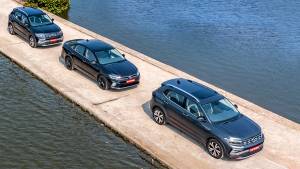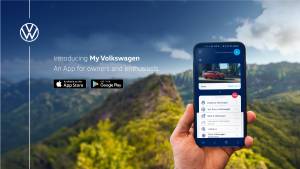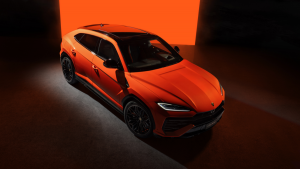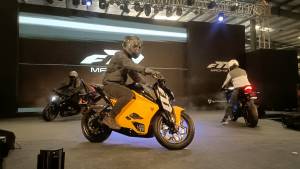Michael Mayer, director of Volkswagen passenger cars India speaks about Ameo and future products
OD: Explain the Ameo strategy
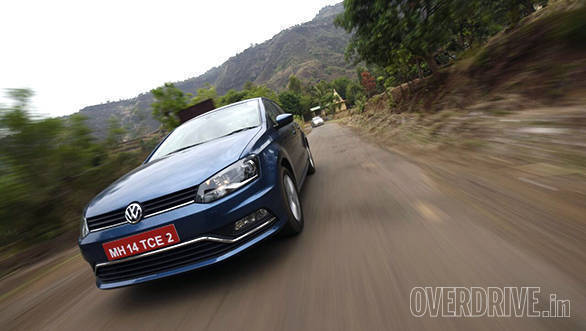
MM: It was a clear strategic move into that category. We never really measured it up to the Polo. If you look at the entry price, the Ameo is less expensive than the Polo, but the Polo is in a different stage of its life cycle. If you look at the higher variants, like the Highline, you will find the Ameo to be slightly more expensive than the Polo. If there is one segment in India, above or beyond the entry car segment, where people look for specific value, it's the sub-compact sedan segment. And we are the best package in the market for the time being.
OD: How important is this segment?
MM: I think it's driven by the perceptions of the customers. We need to sell what the customers want to some extent. This is the segment where we've to squeeze the car to four metres, which is a difficult thing to express and execute a really good package. The design, roominess and all of that are determined by this four-metre rule. But at the end it's what the customer wants. There is a huge segment of people who actually look for it. So if you want to be in India, this is probably the most genuine segment to be in.
OD: What are VW's new goals?
MM: We have a different situation in VW now. If you look back, maybe 6-7 years ago, some of the market projections did not come true at all. But in all fairness, I have to say that our aspirations probably did not fully come through. But what we managed to do is build a very reputed brand that sits where others want to sit. The efforts of other people, you know, painting their showrooms black and making it differently badged, they do exactly what we have been doing from the beginning. This makes the space a bit more crowded. So, for us, it is mission accomplished. Yes, there is a clear aspect of size in a market like India and competitiveness in terms of size and package. That's where we have a new approach that will soon materialise.
OD: India gets a rather lean line-up
MM: We came with the Beetle, another niche, which is our brand icon. The Passat is coming and so is the Tiguan, both of which are car concepts that clearly compete with the 'premium car' as they call themselves. That's where you are in the space for the most accessible, premium German car brand, and this is as far as it stretches. It probably won't stretch beyond that. We are not going to get really big cars, which may be in China or Europe. We also feel that the `20-lakh-plus segment is where there will be growth in the number of buyers. It was slowly populated before, but it gets interesting now. For the time being, we will not get into the entry segment. That's a too big stretch for us.
OD: The direction for India
MM: I would say that we've started the climb a couple of years ago and reached a kind of base camp now. We'll get acquainted to the height a little bit, acquainted to the oxygen levels, feeling more comfortable and ready for the next step. And I see this really as a long-term strategy. The key elements for the next big step towards this is getting India in-line with the global economy strategy.
We will need alignment with the Brazilian, South African and Russian markets that have demand for similar products. And once we are ready with that, we'll be looking at getting the brand up with an extended range of products. We start now and by the mid of next year it will be substantially extended. You'll see more cars in the VW showrooms.
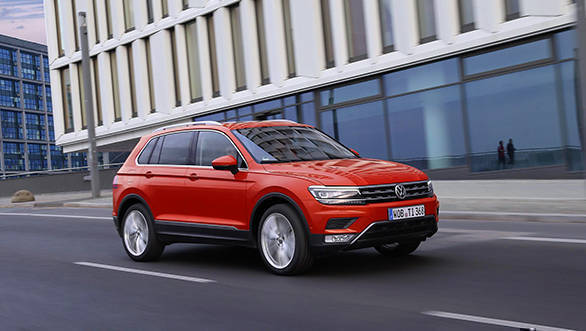
OD: Where does the Polo GTI fit in?
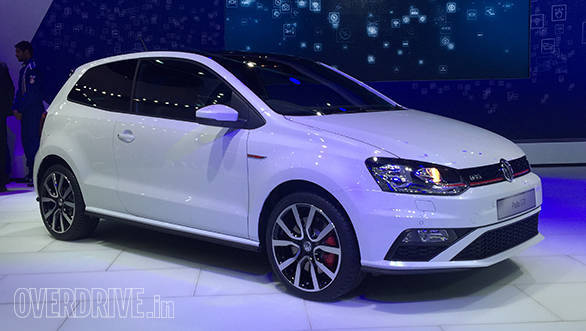
MM: The Polo GTI will be an expensive car. It is a CBU with 192PS and there is nothing like that. But who says it's not the first step in getting a locally made GTI, which has the credentials of the GTI, but of course comes with a more local package. And I think there is big room for that. It needs some preparation. We will come out with the price pretty soon because the car gets on the road in the next couple of months.
OD: Why not a Scirocco GTI?
MM: I think that people who buy the Polo GTI will not be considering the price too much. It will be more of a kind of unique racing toy that they'll have, and this is how they will consider this purchase. A Sirocco wouldn't help us. The Sirocco has a European legacy and the package is more extreme. I already have an extreme package, the Beetle.
The Polo GTI is a distinct decision because the Polo GT already has a big community, and there are thousands of people who have it. This is the foundation, and then you need a halo product on top of it. And I'm not concerned with people associating the GTI with a Polo.
OD: What about premium MPVs?
MM: I'd love to get an MPV if I had a ladder-frame concept that could deliver the same robustness and versatility. We don't have that. It's a clear reality we have to face. Our European products would not meet the price point if we get them to India. Also, I think the example of the Innova shows that Indian market, despite being a small car market, also has the need for good quality passenger transport for the individual consumer. Toyota here can take that purchasing power of people because there is nobody else to offer you something. It is a really good product.
OD: Why not set the trend?
MM: First I would like to say that we have been faring globally quite well with our current strategy. And I think it is just the retrospect view to that, whether that's intentional or not, I won't comment. From a brand perspective, the next big step change in the industry is not about reinventing body styles. It is more about an entire concept. It's about electric hybrids, autonomous and aided driving. These are the next things where we are at the forefront. Whether they are India relevant at the same point as somewhere else, I doubt. We might go a slightly different way, but definitely the capabilities and maybe the downstream economies to bring it into cheaper product offerings.
OD: The diesel engine recall
MM: We are in intense talks with the authorities to get the respective software approved by ARAI. Yes, it is a very complex thing, since there are various engines and engine versions and you also have to see it as part of the global effort that's massively started in Europe. Yes, it's now that we rather look at the detail than at ultimate speed. As all cars are roadworthy and useable. In the meantime, we want everything ready and approved by the authorities. Their capacities are also limited to get it all done. We will start soon and this not a concern for me at all. Anyway, it's something that takes time.
OD: India's unstable regulations
MM: I think there are various aspects. One is the diesel ban, which I think I'm not alone here, though it has been settled to some extent. It is not a very efficient measure to tackle a particular issue which is metropolitan pollution. There are ways, and other cities globally have shown how you do that.
We are very much in favour of getting the BS 6 into India which will also change the viability of diesel. We see all that and have to face the reality that diesels are going to get a bit more expensive. The reach will be lower but it will never vanish. The big hype on petrol engines will be normalised because looking at the size of the country and the mobility of needs of the country, you'll always need diesel because it is more energy efficient.
OD: Increased demand for petrols
MM: Absolutely, it has changed but we are still balancing it. We still see some good traction for diesels, for instance, in the Vento. I think the strategy is that you need to be flexible to a certain extent, and of course you need to localise the petrol engines. We've done it with diesel engines now, and we'll follow that up with petrol, which will play a big role if you are in the small car segment.
OD: Improved aftersales service
MM: This is with regards to the comment about the dependability of the service in your Ameo review. I'd strongly recommend an objective view of that. Yes, there are perceptions out there, which are mainly driven by people saying, "I've had a very bad experience [with the service]."
But if we look at it rationally, I've been dedicating a lot of time with my team to address that. I don't think that we are substantially worse than anyone in that segment. Yes, we have fewer dealers than most of the others. We have also changed a couple of dealers in the past that have been involved in malpractice. We have introduced a menu pricing system that you can see in each dealership, behind the service counter. This is integrity and transparency for the customer. Yes, there may be some distance to catch up with the others. The other thing is if your periodic maintenance is at 15,000km and that of others is at 10,000km, there is a difference to whatever you pay. But it's not the customer's fault. We need to explain it to them so that they can believe it. But if you do the cost of ownership calculations, we are not substantially more expensive.
Starts Rs 5.96 Lakhs
1498cc
Manual
76
250
21.66 Kmpl
Starts Rs 6.17 Lakhs
999cc
Automatic
76
175
16.47 Kmpl
Starts Rs 31.99 Lakhs
1984cc
Automatic
190
320
12.65 Kmpl
Related Stories
Top Stories
Latest Videos
Most Popular
- Budget Sportbike Showdown: Kawasaki Ninja 500 vs Aprilia RS 457 vs Yamaha YZF-R3
- 2014 Triumph Daytona 675 vs 2024 Kawasaki ZX6R - A Decade of Evolution in Supersport Motorcycles
- Mumbai-Pune Expressway speed restrictions updated
- Nissan Magnite EZ-Shift review - is the AMT any good?
- Nitin Gadkari states that tax on Hybrids should be reduced to 12 percent in the coming future
